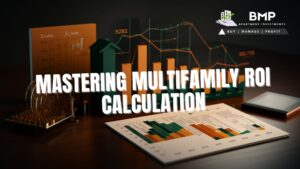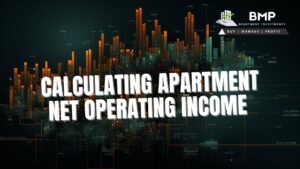Real estate investing is a great way to generate passive income and build long-term wealth. However, when it comes to real estate investing, there are many options to choose from, including single-family homes, multifamily properties, commercial real estate, and more. In this article, we will focus on why multifamily investing is better than single-family investing, and provide some realistic case examples to support our points.
Scalability
One of the key advantages of multifamily investing is scalability. With a single-family home, you can only rent out to one tenant at a time, which limits your income potential. In contrast, a multifamily property can house multiple tenants, increasing your potential rental income. For example, if you own a four-unit apartment building, you can generate four times the rental income compared to owning a single-family home.
When an investor owns multiple single-family homes, they must manage each property individually, which can be time-consuming and difficult to scale. In contrast, multifamily properties offer a more streamlined approach, where investors can manage several units within a single property. Additionally, with the help of experienced syndicators and professional property management companies, managing larger multifamily properties becomes more feasible. For example, if an investor owns multiple single-family homes, they would need to coordinate with multiple contractors, tenants, and service providers, which can be overwhelming. However, with a larger multifamily property, these responsibilities are handled by a professional property management company, freeing up the investor’s time and resources.
Diversification
Another advantage of multifamily investing is diversification. When you own a single-family home, your rental income is entirely dependent on one tenant. If that tenant moves out or stops paying rent, your income stream is disrupted. In contrast, with a multifamily property, you have multiple tenants, which reduces your risk. If one tenant moves out or stops paying rent, you still have other tenants to generate rental income from.
Example:
Suppose you own a single-family home, and your tenant moves out. You now have zero rental income until you find a new tenant. However, if you own a four-unit apartment building, and one tenant moves out, you still have three other tenants generating rental income.
Economies of Scale
Multifamily investing also offers economies of scale. When you own a single-family home, you have to pay for all the maintenance, repairs, and upgrades yourself. However, with a multifamily property, you can spread these costs across multiple units. Additionally, you can negotiate better rates with contractors and service providers due to the larger volume of work.
Example:
Suppose you own a single-family home, and the roof needs repair. The cost of the repair is $10,000. You have to pay the entire cost yourself. However, if you own a four-unit apartment building, and the roof needs repair, the cost is still $10,000, but you can spread the cost across four units, making the cost per unit $2,500.
Higher Cash Flow
Finally, multifamily investing offers the potential for higher cash flow compared to single-family investing. With multiple units generating rental income, you have more money coming in each month. Additionally, multifamily properties typically have higher occupancy rates, which means you are more likely to have consistent rental income.
Example:
Suppose you own a single-family home that generates $1,500 per month in rental income. After deducting expenses such as mortgage payments, property taxes, insurance, and maintenance, your net cash flow is $500 per month. In contrast, if you own a four-unit apartment building that generates $6,000 per month in rental income, and after deducting expenses, your net cash flow is $2,000 per month.
In conclusion, multifamily investing offers many advantages over single-family investing, including scalability, diversification, economies of scale, and higher cash flow. While there are certainly risks associated with any type of real estate investing, investing in multifamily properties is a proven way to create wealth in the long term.
Multifamily vs. Single-Family Investing
| Aspect | Multifamily Investing | Single Family Investing |
| Scalability | Ability to scale rental income with each additional unit | Limited ability to increase rental income without purchasing additional properties |
| Diversification | Diversified income stream with multiple units in one property | Limited diversification with income dependent on a single property |
| Professional Management | Professional property management companies can manage day-to-day operations | Management of individual properties may be more difficult without professional help |
| Economy of Scale | Lower per-unit costs for maintenance and management | Higher per-unit costs for maintenance and management |
| Acquisition Cost | Larger upfront investment required, but may provide better returns | Smaller upfront investment required, but lower potential returns |
| Resale Value | May have higher resale value due to potential for higher income | Resale value dependent on individual property and market conditions |
| Market Demand | Strong demand for affordable multifamily housing, particularly in urban areas | Demand may vary depending on location and market conditions |
| Financing | More financing options available due to larger investment size | Fewer financing options available for individual properties |
| Risk | Spread risk across multiple units and tenants | Risk concentrated in a single property and tenant |











